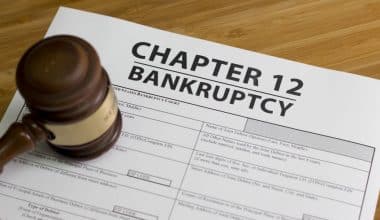Fiscal policy refers to the use of government spending and taxation to influence the economy.
It is a powerful tool that can be used to stabilize the economy by controlling inflation and unemployment.
The government can use fiscal policy to either stimulate economic growth or slow it down, depending on the current economic situation.
When the government increases spending, it can stimulate economic growth and reduce unemployment.
This is known as expansionary fiscal policy. For example, the government can increase spending on infrastructure projects, which can create jobs and boost economic activity.
Additionally, increasing government spending on social programs such as education and healthcare can also help to stimulate economic growth.
However, increasing government spending can also lead to inflation if too much money is pumped into the economy.
This is why the government must be careful when implementing expansionary fiscal policy and make sure that it is not overused.
On the other hand, when the government reduces spending or increases taxes, it can slow down economic growth and decrease inflation.
This is known as contractionary fiscal policy. For example, the government can reduce spending on certain programs or increase taxes on certain goods or services. This can help to slow down economic growth and decrease inflation.
What is the Meaning of Fiscal Policy?
The government of any country uses fiscal policy to influence the economy. Fiscal policy can be used to keep the economy stable, distribute resources and income, and deal with the national debt.
By adjusting the level of government spending and taxation, it can be used to promote economic growth, reduce unemployment, control inflation, and address other economic challenges.
The primary tools of fiscal policy are government spending, taxation, transfer payments, and the budget deficit/surplus.
Governments can use changes in these areas to influence the overall level of demand in the economy, which in turn can affect economic growth and inflation.
For example, increasing government spending or decreasing taxes can increase demand and stimulate economic growth, while decreasing government spending or increasing taxes can decrease demand and slow inflation.
It is worth noting that fiscal policy can have both short-term and long-term effects on the economy and that the effectiveness of fiscal policy can depend on various factors such as the state of the economy, the credibility of the government, and the design of the policy.
What are the Three Types of Fiscal Policy?
The three types of fiscal policy are expansionary, contractionary, and neutral.
- Expansionary fiscal policy: This involves increasing government spending or decreasing taxes in order to stimulate economic growth and combat high unemployment.
- Contractionary fiscal policy: It involves decreasing government spending or increasing taxes in order to slow down inflation and control government debt.
- Neutral fiscal policy: This involves making no significant changes to government spending or taxes, and is used to maintain the current state of the economy.
What are Fiscal Policy Examples?
Fiscal policy refers to the use of government spending and taxation to influence the economy. Examples of fiscal policy include:
- Increasing government spending on infrastructure projects to stimulate economic growth.
- Lowering taxes encourages individuals and businesses to spend more money, which can also stimulate economic growth.
- Implementing a progressive tax system, where people with higher incomes pay a higher percentage of their income in taxes, reduces income inequality.
- Cutting government spending during a recession to reduce the budget deficit and slow inflation.
- Providing welfare benefits such as unemployment insurance to support individuals during economic downturns.
How Does it Affect the Economy?
Fiscal policy can affect the economy in a variety of ways, depending on the specific policies implemented and the economic conditions at the time. Some of the ways that fiscal policy can affect the economy include:
#1. Stimulating economic growth
Increased government spending or decreased taxes can increase overall demand in the economy, which can lead to increased economic growth and job creation.
#2. Reducing unemployment
Government spending on infrastructure projects and social welfare programs can increase demand for labor, which can help to reduce unemployment.
#3. Controlling inflation
Fiscal policy can be used to control inflation by adjusting government spending and taxes.
For example, reducing government spending and increasing taxes can slow inflation, while increasing spending and decreasing taxes can stimulate inflation.
#4. Altering income distribution
Progressive taxation and transfer payment programs can be used to redistribute income and reduce poverty and income inequality.
#5. Impacting interest rates
Large government spending or deficits can put pressure on interest rates, making borrowing more expensive for both the public and private sectors, and can also affect the currency’s value in international markets.
What are the Four Major Functions of Fiscal Policy?
The four major functions of fiscal policy are:
#1. Stabilization
It can be used to stabilize the economy by counteracting fluctuations in economic activity.
For example, during a recession, the government may increase spending or decrease taxes to stimulate economic growth and reduce unemployment.
#2. Allocation
It can be used to allocate resources in the economy by directing spending toward certain sectors or groups.
For example, increasing spending on education or infrastructure can help to promote economic growth and development.
#3. Distribution
It can also be used to redistribute income and wealth by implementing progressive taxation and transfer payment programs. This can help to reduce poverty and income inequality.
#4. Debt Management
Fiscal policy can be used to manage the national debt by adjusting government spending, taxes and other financial instruments.
This can help to ensure that the debt is sustainable in the long-term and does not pose a risk to the economy.
Who Controls Fiscal Policy?
Fiscal policy is controlled by the government. In most countries, the government’s budget is determined by the legislative branch of government, which is responsible for passing laws and setting spending priorities.
The executive branch, typically led by the President or Prime Minister, is responsible for implementing fiscal policies.
In some countries, an independent central bank, such as the Federal Reserve in the United States, also plays a role in fiscal policy by setting monetary policy, which can affect the economy in a similar way.
However, in most cases, the central bank operates independently from the government, although there could be some coordination between the two.
In some countries, there’s also an institution like the Office of Budget Responsibility or Fiscal Council that are created to provide independent analysis and recommendations on fiscal policies.
It’s important to note that the level of control and independence of these institutions can vary widely between countries, and it depends on the political and constitutional setup of each country.
Monetary vs Fiscal Policy
Monetary policy and fiscal policy are both tools that governments use to influence the economy, but they operate in different ways.
The Monetary policy is the process by which a central bank, such as the Federal Reserve in the United States, manages the money supply and interest rates to achieve macroeconomic goals such as price stability and full employment.
The central bank can use a variety of tools to achieve these goals, such as setting the discount rate at which banks can borrow from the central bank, buying or selling government securities in the open market, and setting reserve requirements for banks.
Fiscal policy, on the other hand, refers to the use of government spending and taxation to influence the economy.
It can be used to stabilize the economy, allocate resources, redistribute income, and manage the national debt.
It can be implemented through changes in government spending, taxes, and transfer payments.
Both monetary and fiscal policy can be used to achieve similar macroeconomic goals, such as promoting economic growth, reducing unemployment, and controlling inflation.
However, they operate through different channels and have different strengths and weaknesses.
Monetary policy can be used to directly control the money supply and interest rates, which can affect the economy relatively quickly.
Fiscal policy, on the other hand, operates through changes in government spending and taxes. This can take longer to affect the economy and may be subject to political constraints.
In general, monetary policy is considered to be more effective in controlling inflation, while fiscal policy is considered to be more effective in promoting economic growth and reducing unemployment.
Fiscal Policy Tools
Fiscal policy tools are the means by which governments use spending and taxation to influence the economy. Some common tools include:
#1. Government Spending
Governments can influence the economy by increasing or decreasing spending on various programs and projects.
For example, increasing spending on infrastructure projects can stimulate economic growth and create jobs, while decreasing spending on welfare programs can slow inflation.
#2. Taxation
Governments can also influence the economy through changes in tax policy.
For example, decreasing taxes can encourage individuals and businesses to spend more money, which can stimulate economic growth, while increasing taxes can slow inflation and reduce the budget deficit.
#3. Transfer Payments
Governments can also use transfer payments, such as welfare benefits, to redistribute income and support individuals during economic downturns.
#4. Budget Deficit/Surplus
Governments can also use budget deficit or surplus as a tool.
A budget deficit occurs when government spending exceeds revenue, while a budget surplus occurs when revenue exceeds spending.
Running a budget deficit can be used to stimulate economic growth during a recession while running a budget surplus can be used to slow inflation and reduce the national debt.
#5. Public Investment
Governments also use public investment as a tool, to invest in infrastructure, education, and research and development can increase the productivity of the economy and improve economic growth.
What are the Problems of Fiscal Policy?
The primary issues associated with a fiscal policy are:
- Crowding out
- Timing
- Deficit spending
- Effects on international commerce
- Deficit spending
- Religion
Is it Appropriate for the Government to Intervene in the Economy?
Is it appropriate for the government to intervene in the economy?
One of the most difficult decisions for policymakers is determining how much direct engagement the government should have in the economy and people’s economic lives. Indeed, the government has interfered in numerous ways throughout the history of the United States. Most people agree that a certain level of government participation is required to maintain a dynamic economy on which the population’s economic well-being depends.
What are the four fiscal policy issues?
Fiscal policy’s primary issues are deficit spending, crowding out, timing, political considerations, and the effects on international commerce.
Conclusion
In conclusion, fiscal policy plays a crucial role in shaping the economy. Through the use of government spending and taxation, policymakers can influence economic growth, unemployment, and inflation.
By increasing taxes or reducing government spending, it can slow down economic activity and reduce inflation.
The government can also use the policy to redistribute wealth and address income inequality.
However, it is important to note that fiscal policies can also have unintended consequences, such as increasing the national debt. It should be used judiciously in conjunction with monetary policy.
It’s important to note that the effects of fiscal policies can take time to materialize. It should be used in conjunction with monetary policy to achieve optimal economic outcomes.
Overall, fiscal policies are important tools that policymakers can use to stabilize the economy and promote long-term growth.
RELATED ARTICLES
- GHOST WORKERS COMP POLICY: Definition and All You Need To Know
- Discretionary Fiscal Policy: 2023 Definitive Guide(+Detailed Examples)
- PAY EQUITY: Importance of Pay Equity Policy
- PAYPAL SELLER PROTECTION: Detailed Guide to the PayPal Seller Protection Policy






